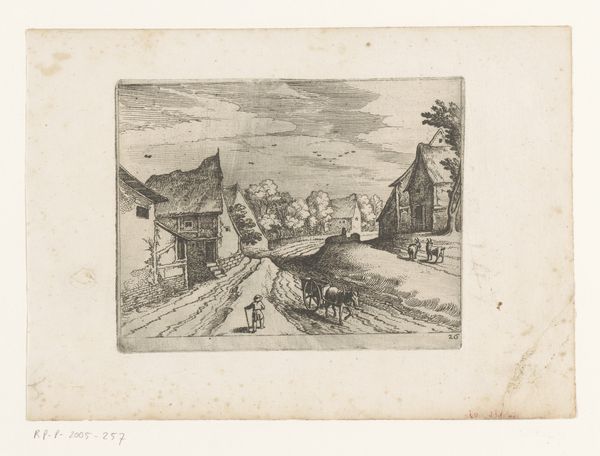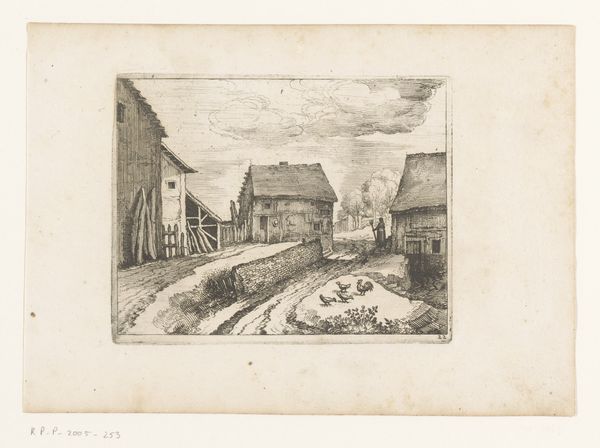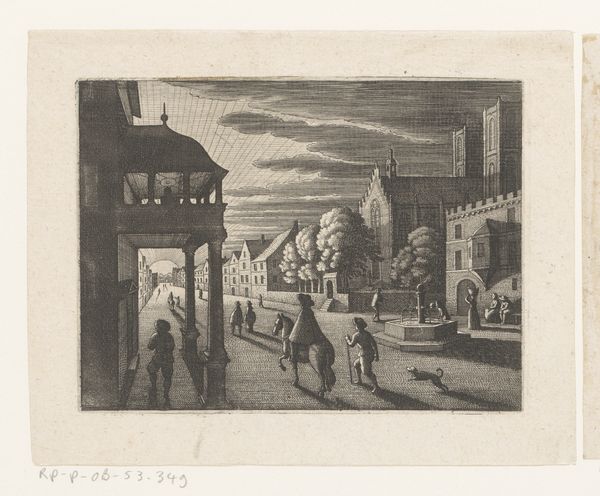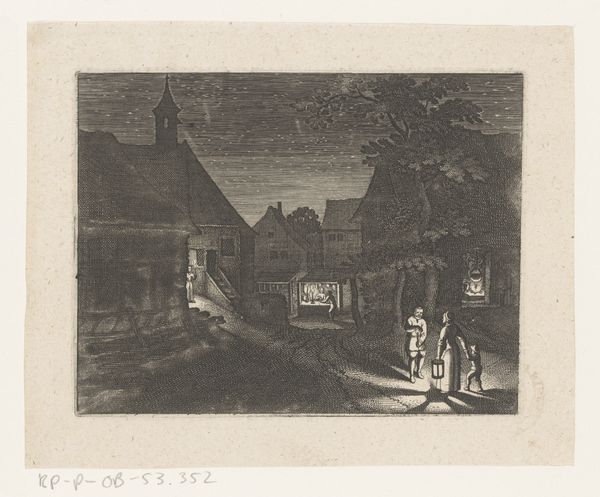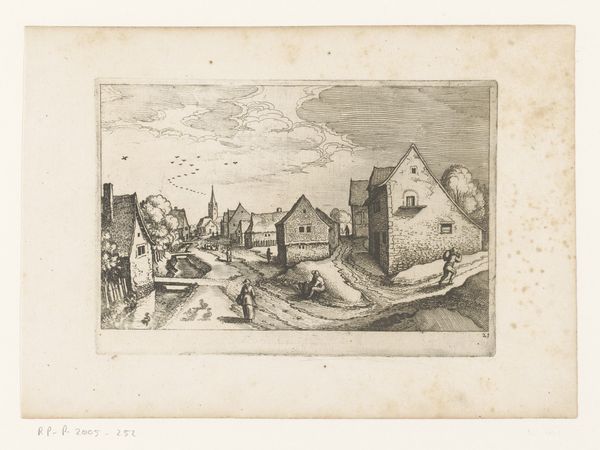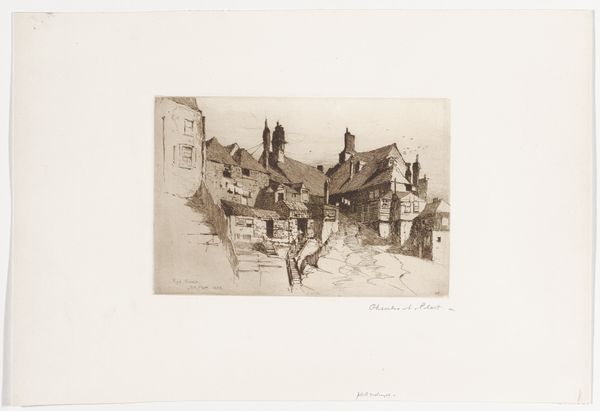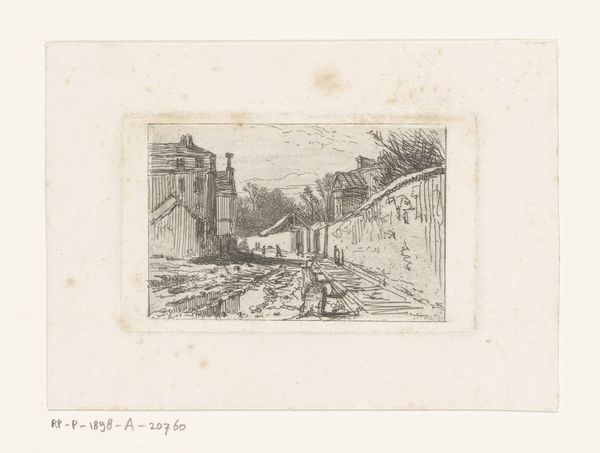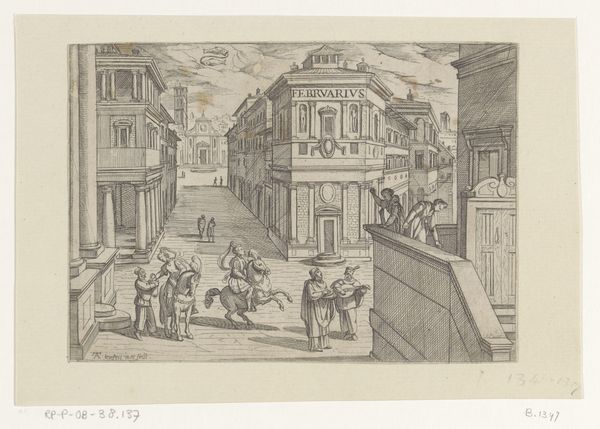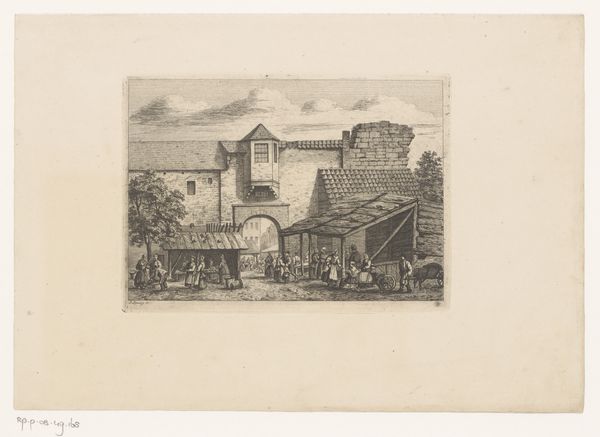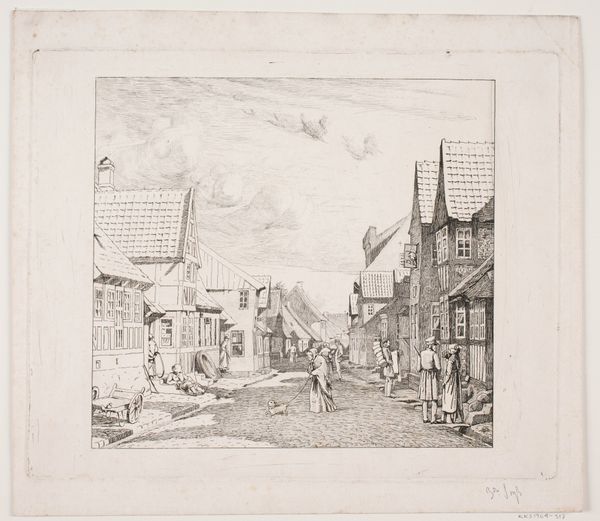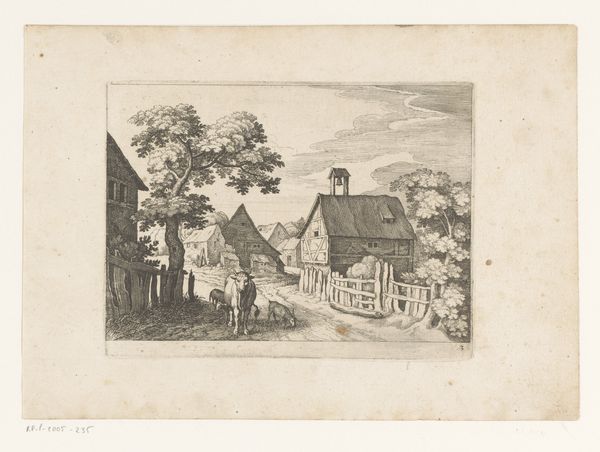
print, engraving
#
baroque
#
dutch-golden-age
# print
#
landscape
#
cityscape
#
engraving
Dimensions: height 113 mm, width 150 mm
Copyright: Rijks Museum: Open Domain
Editor: So this is "Gezicht op Charenton-le-Pont," an engraving by Matthäus Merian dating sometime between 1603 and 1650. The detail is incredible, and it has such a calm, almost picturesque feel. What stands out to you? Curator: Beyond the artistry, I see a portrait of power, subtly rendered. Note the mounted figure crossing the bridge. The bridge itself is a locus of control—access, trade, movement, all dictated by those who govern Charenton-le-Pont. What does it say about who has the power in this time period? How does Merian reinforce that power? Editor: I hadn't considered that angle. It seems almost romantic, but you're right. Who has access and who is restricted speaks volumes. The smoke in the background – is that related? Curator: Perhaps. Industrial development was starting, but control over resources and production defined social stratification. The smoke suggests a burgeoning industry that fueled expansion. How might that smoke symbolize opportunity for some, while signifying exploitation and environmental disregard for others? Is it a signal of progress or pollution, literally and metaphorically? Editor: I guess both. It's making me rethink the whole image. Even the act of representing the town – was Merian intentionally portraying the status quo, or was he commenting on it? Curator: The very act of depicting can be an act of power. These images can naturalize particular ways of seeing, or can be deployed to create different kinds of futures. Do you see othering reflected in the image, the way the town might separate itself from those crossing? Editor: Now that you point it out, yes. It’s so much more than just a pretty cityscape. It shows who belonged, and who was just passing through. Curator: Exactly. Understanding these underlying narratives is crucial to deconstructing art history, ensuring that diverse voices are acknowledged and represented. Editor: This really shifts how I’ll approach historical landscapes going forward. Thanks for that insight.
Comments
No comments
Be the first to comment and join the conversation on the ultimate creative platform.
